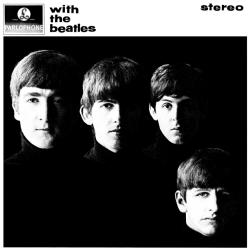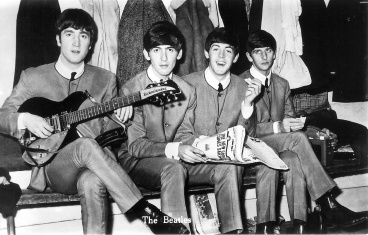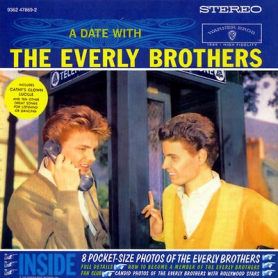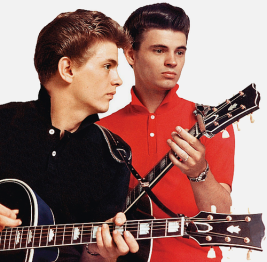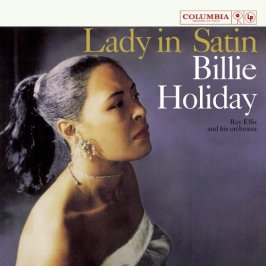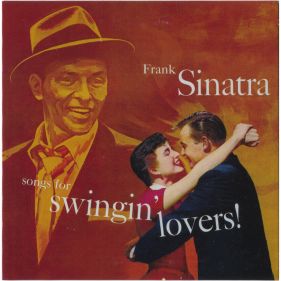
For the first entry in my All-Time Greats series of album reviews, we’re going to talk about what I personally consider to be one of the greatest albums ever recorded: Stevie Wonder’s legendary 1976 double-plus-EP album Songs in the Key of Life. At just over 100 minutes in length, there is no shortage of material to discuss, let alone highlight favorites from, but I believe that this masterpiece deserves to have every last minute discussed, praised, criticized, and immortalized. Consisting of two LPs and a bonus “A Little Somethings Extra” EP, this record takes the listener on an unparalleled musical odyssey encompassing a cornucopia of musical styles, moods, and ideas. You’ll always discover something entirely new to love about this album almost every time you hear it all the way through, and there is simply so much artistic genius on display here that multiple listens are practically required. This record deserves every single bit of praise and adoration it has received over the years, and no matter how much I write about it, I’ll never really be able to do the music justice. But I might as well try!
The album opens with a slow-burning, soulful peace ballad, “Love’s in Need of Love Today.” It’s one of the album’s longer cuts, but every second is pure ear-candy. Beautiful vocal harmonies, subdued percussion, and gorgeous synthesizers populate this track’s patient but powerful runtime, gently easing the audience into the following experience in, dare I say it, wonderful fashion. Alright, I apologize, that was pretty terrible. I will refrain from any name-based puns for the remainder of this review. Anyways, the boundaries between organic and synthetic instrumentation is blurred constantly throughout this album’s runtime, with electronic instruments creating breathtaking, warm and organic-feeling soundscapes on the following tracks, “Have a Talk With God” and “Village Ghetto Land.” The former puts lyrics of faith and inspiration over an incredibly cool, hypnotic, gurgling keyboard track with the usual incredible backup singing, while the second sees Wonder singing solo about life in a poverty-stricken ghetto, calling for action regarding inner-city living conditions and lawmaker’s indifference towards the plights of marginalized populations facing such dire situations. What truly makes the track, however, is the fabulous synthetic string-section providing the track’s instrumentation. Miraculously, Wonder somehow manages to make fake strings work even better than real ones would have, and the result is an unforgettable slice of ear-pleasing and politically charged songwriting that would be the clear standout track on any other album. However, this is Stevie Wonder we’re talking about, so of course this is followed by yet another near-perfect track, the dizzying instrumental “Contusion.” Mike Sembello’s guitar playing on this track is just pure technical perfection, playing complex yet captivating solos and riffs throughout. The wordless vocals that come in about halfway through are also a great touch, making what would have been a nice instrumental interlude into an outstanding piece in its own right. The album then segues into “Sir Duke.” Dear. God. This freakin’ song. I can’t even begin to get across how stupidly happy this song makes me. Hell, it might just be my favorite out of all 21 of this album’s tracks. There are very, very few songs ever written that I would consider perfect, and “Sir Duke” is up there near the top of even that selective group. The lyrics are about Duke Ellington, but honestly I don’t really even care what the lyrics are about; they could be about anything and this song would still be absolute perfection. This is in that rare league of songs that are so damn happy they actually make me cry. I’m not ashamed to admit that this song gets me all choked up nearly every time I hear it. I seriously don’t think any other song I’ve ever heard has actually made me cry real tears of joy before. Maybe I’m just a mess, but this song just gets to me in the best possible way.
Side 2 kicks off with “I Wish,” a cool, groovy ode to childhood with a bassline to kill for. Stevie’s singing is flawless here, but then again, isn’t it always? After this is the calm, subdued ballad “Knocks Me Off My Feet.” We all know this by now, but I just need to say it again: Stevie Wonder’s chorus and hook-writing skills are almost completely unparalleled in the entire world of music. It may seem like I’m hyping his talents up a bit too much, but in all honesty I believe this guy to be one of the greatest songwriters of all time. I simply can’t stress enough how good he is at writing a moving, captivating, unforgettable song. “Pastime Paradise” is a trance-like rhythmic jam that makes you feel a bit disoriented, but definitely in a good way. I find this album somewhat exhausting to listen to sometimes for the simple fact that every single song is so damn good that there just isn’t any cooldown time. You don’t get a break, because the very next song is just as good, and then the next one after that, and so on. There are just too many incredible songs here. How he managed to write so many songs that are good enough to be any other artist’s defining song of their entire career, and put them all on the same album is just boggling to the mind. “Summer Soft” is one of the defining examples of how exhaustingly enjoyable this album can be to listen to sometimes. This album has a bit of a habit to create an awesome, goosebump-raising moment and then just hold you there, for an extended period of time. For example, in “Summer Soft,” we have the choruses, where he creates this incredible musical moment, and then escalates it, repeatedly, to an almost self-parodic degree, and the result is a song that’s so awesome it’s actually difficult to get through. And finally, the first LP is closed off with “Ordinary Pain,” a calmly depressing number with an energy-filled extended coda delivered by the incredibly vocally talented Shirley Brewer. After getting through these first 10 tracks, you may think to yourself “if I’m just under halfway through this thing, how could it possibly follow this up with anything even remotely up to the standard of quality this first group of tracks has set?” Well… let’s just say the second LP is more than up to that standard of quality. Oh boy, is it. You’re just too much, Stevie. Gimme a break with all this incredible music, man.
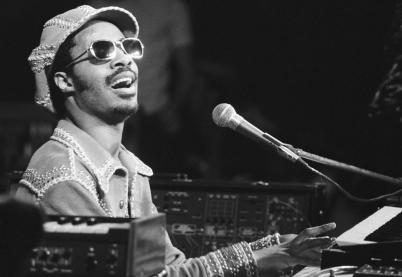
Image source: rockhall.com
The second LP is where Stevie really breaks out the big guns. Of the seven tracks on the LP, only two are under six minutes: that being “Ngiculela – Es Una Historia – I Am Singing,” a tri-lingual synthetic keyboard ballad, and “If It’s Magic,” a brief and haunting piece featuring only vocals and harp, played by Dorothy Ashby. The LP starts with “Isn’t She Lovely,” a tear-jerking, ultra-heartwarming ode to his newly-born baby daughter. The song features an iconic harmonica line and some of the most impassioned vocals on the entire record, with the second half being occupied by homemade tape recordings of his daughter cooing, struggling to form words, refusing to get in the bath, and generally just being absolutely adorable. The following track, “Joy Inside My Tears,” is both one of the album’s most repetitive and moving cuts. The verse-to-chorus ratio on this one is definitely skewed, with a majority of the track consisting of a seemingly endless chant of the main chorus. On paper this may seem like it would get incredibly tiresome pretty quickly, but in execution, it only gets more profound and emotional with each repetition. Every time the chorus begins again, it seems to get more emotionally intense, which results in all six minutes of this track being some of the most deeply riveting you can find on this record. This is directly followed up with the longest track of the album, “Black Man,” at over eight minutes in length. This track features some of the record’s most potent and rousing political lyrics, consisting mainly of a list of scientific, historical and cultural achievements by people of color that have been largely swept under the rug and forgotten by your typical history class. This track somehow manages to make the listener happy and angry simultaneously, with the lyrics feeling like an incredible celebration of these people’s contributions to the world, but also demonstrating that a good number of these people’s names have been for the most part forgotten by the general population. Names such as Daniel Hale Williams, first person to perform a successful heart surgery, Garrett Morgan, inventor of the gas mask, and Crispus Attucks, first known person to die for the American flag, are listed off in succession, all with an accompanying unspoken question of why these are not names we are all familiar with. This song is truly a highlight on a record of highlights, standing out even next to the other excellent tracks on display.
Next up are the two sub-six-minute tracks mentioned earlier. While these two are great in their own right, they do still feel somewhat like interludes: simple warmups for the two slices of pure bliss to follow. “As” and “Another Star” are somewhat similar to each other, but by virtue of being back to back to each other, they serve as a sort of combined epic finale to the record. I tend to talk about the two as if they were one long song, because in my opinion they just beg to be listened to together. Both songs are over 7 minutes, and combined they are the ultimate fifteen-minute funky freakout to end the album proper. Don’t even start listening unless you plan on hearing the whole thing, because once you start, the driving, repetitive backup vocals and jamming instrumentals make it utterly impossible to pause. Truly, Stevie couldn’t have ended this journey in a better fashion. There are, however, four additional tracks found on the “A Little Somethings Extra” EP that was included with the album. Overall these tracks are of a high quality, with “Saturn” giving us a cinematic and dramatic ballad, “Ebony Eyes” providing a goofy romp of a love song that doesn’t take itself too seriously, “All Day Sucker” creating an incredible, groovy rhythm that begs to be danced to, and “Easy Goin’ Evening (My Mama’s Call)” ending the selection of bonus content with a relaxing, chilled-out instrumental that evokes a night spent with family, watching fireflies from the front porch. These songs are all great, but I wouldn’t consider them part of the album proper. They’re intended more as a little extra treat after the main course, and I think they serve that purpose beautifully.
A 100-minute album with no filler whatsoever is a rare thing indeed, but Stevie Wonder accomplished that feat and so much more with this masterpiece of a record. I’ve said just about all I have to say about this utter classic, so I’ll end this debut All-Time Greats review with this: yes, this album is long as hell, and yes, sitting down and listening to the whole thing is an undertaking, but I truly believe that every fan of music should take the time to accept this album into their listening repertoire. It’s a multi-faceted, emotional and joyous ride from start to finish, and Songs in the Key of Life gets the highest recommendation I can give.
What do you think of this album? I’d love to know, so please, leave your thoughts in the comments!


